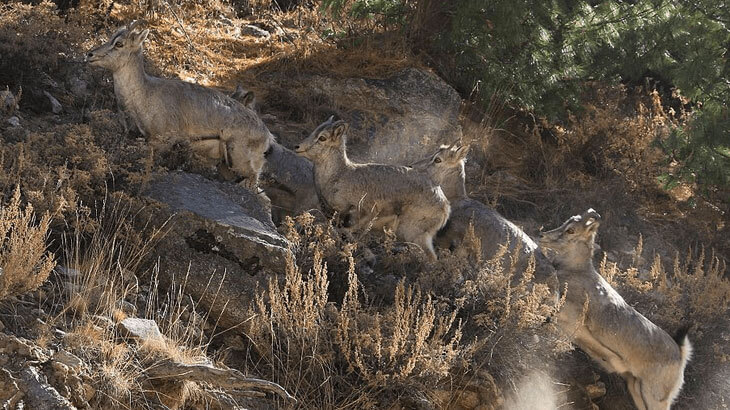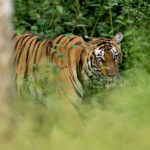Complete List of National Parks & Wildlife Sanctuaries of Uttarakhand

Complete List of National Parks & Wildlife Sanctuaries of Uttarakhand
Below is the complete list of all wildlife sanctuaries of Punjab including national parks, bird sanctuaries, forest reserves of Uttarakhand, India
Download Wildtrails of India app (iOS and Android) to get complete details of each of the sanctuary, kind of animals, birds and reptiles you get to see there, reviews & ratings, near by attractions, how to get there, to navigate there on your mobile, safari details, who to contact, attached accommodations, best time to visit, when closed & when open, all gates/zones info and lot more.
1 Jim Corbett National Park & Tiger Reserve (CTR)
2 Gangotri National Park
3 Govind National Park
4 Nanda Devi National Park
5 Rajaji National Park
6 Valley of Flowers National Park
7 Askot Musk Deer Wildlife Sanctuary
8 Nandhaur Wildlife Sanctuary
9 Binsar Wildlife Sanctuary
10 Govind Pashu Vihar Wildlife Sanctuary
11 Kedarnath (Musk Deer) Wildlife Sanctuary
12 Benog Wildlife Sanctuary Mussoorie
13 Assan Barrage Bird Sanctuary
State Animal of Uttarakhand is: Alpine Musk Deer
The Alpine musk deer is native to the eastern Himalayas in Nepal, Bhutan and India to the highlands of central China. The Alpine musk deer recorded in the Himalayan foothills is now considered a separate species by itself and called as the Himalayan musk deer (aka White-bellied musk deer).
Himalayan musk deer are found in northern parts of India such as in Jammu and Kashmir, Himachal Pradesh, Uttarakhand, Sikkim and Arunachal Pradesh. They inhabit high alpine environments, with the lowest occurring at 2500 m above sea level. The species is endangered due to a high volume of illegal wildlife trade within its range.
They are very well adapted for high altitudes; they demonstrate such adaptations as well-developed dew claws, broad toes that provide increased stability on steep slopes, and a dense coat of coarse hairs with air-filled cells to insulate against the extreme temperature. While they lack antlers, a trait notable among all musk deer, they do possess a pair of enlarged and easily broken canines that grow continuously. The maximum length of these tusks is about 10 cm (4 in). These deer have a stocky body type; their hind legs are also significantly longer and more muscular than their shorter, thinner forelimbs. In place of running or leaping, this species tends to “bound.” Finally, fawns of this species have white spots to help with camouflage, but as they mature these spots disappear.
The white-bellied musk deer has a waxy substance called musk that the male secrets from a gland in the abdomen. The deer use this to mark territories and attract females, but the musk is also used in the manufacture of perfumes and medicines
————————————–
WildTrails (Tm) India App – “One Stop Destination for all Indian Wildlife Enthusiasts“
PS: Please be a responsible wildlife tourist; No littering, No sounds, No feeding, no getting down from the safari jeep (when on safari), No phone calls. Remember that we are visiting their home and when we are there, let’s follow their rules.
[The WildTrails India App is the best way to get all the details about Indian wildlife sanctuaries (best travel times, safari details, animal sightings, forest accommodations pairing, wildlife related activities, prices, etc). Learn more about WildTrails of India here. ios App is here. Android is here, and Web is on the way. Please do like us on our facebook page here.
Download Highway Help App (iOS & Android) which is your friend on the Indian Highways to be your highway friend and companion.
Thanks]
With 4 years of Sightings data + Extensive expert tracker network in jungles, our customers had the best wildlife experiences.
Buy Wildlife Fashion Accessories
Exclusive Online Store for wildlife products
Packages
Packages Loading...
Recent Posts










